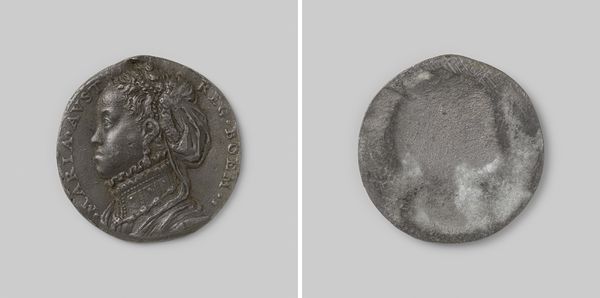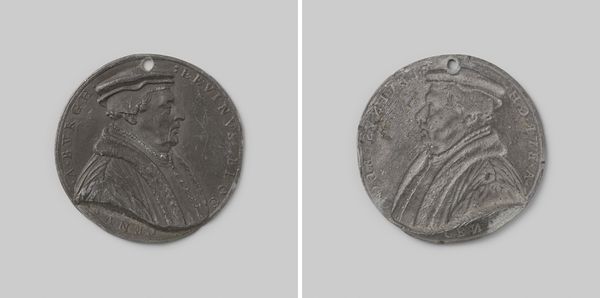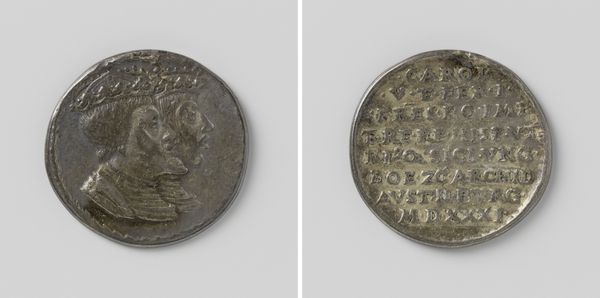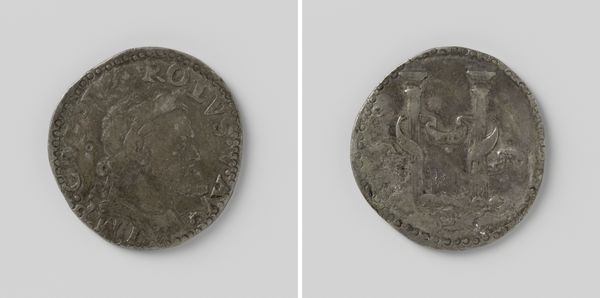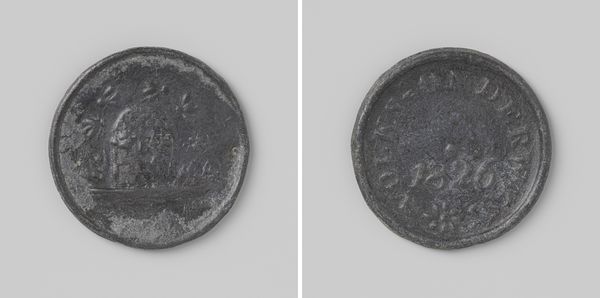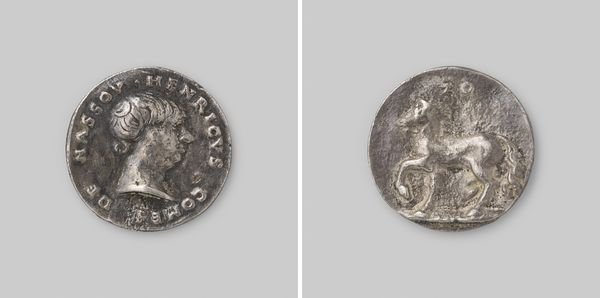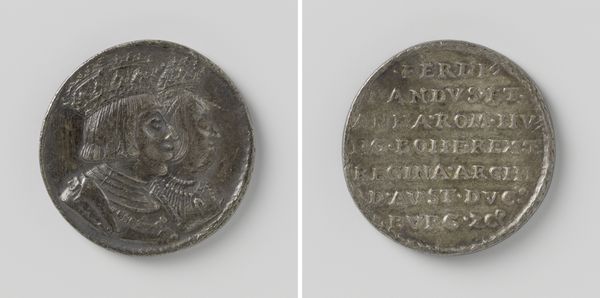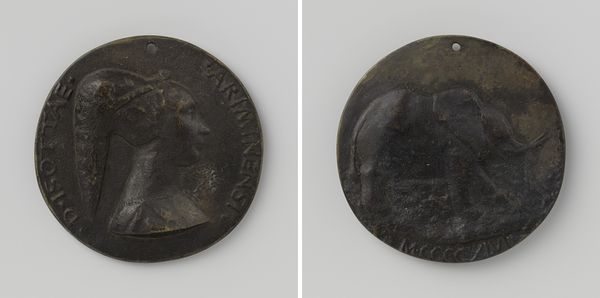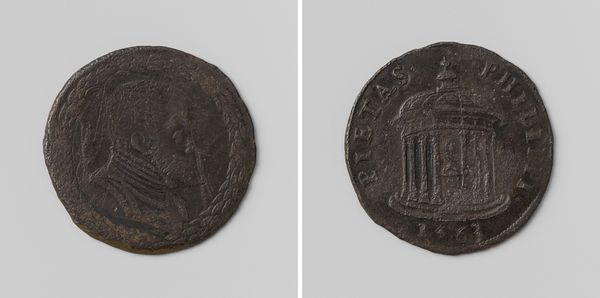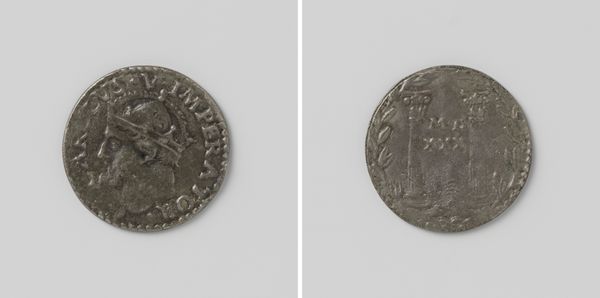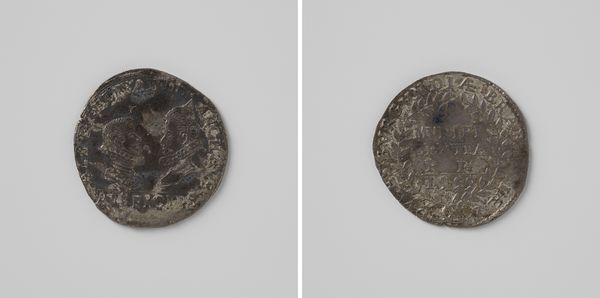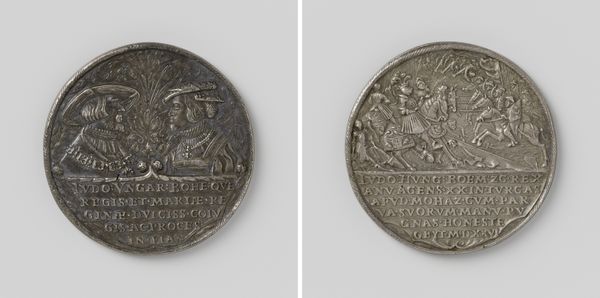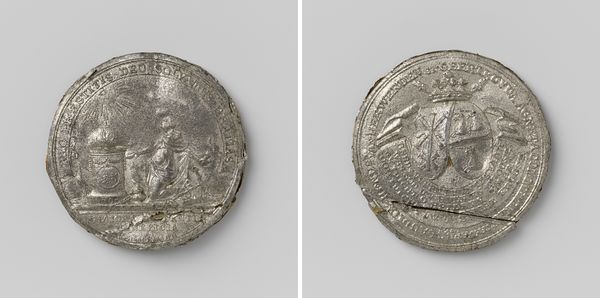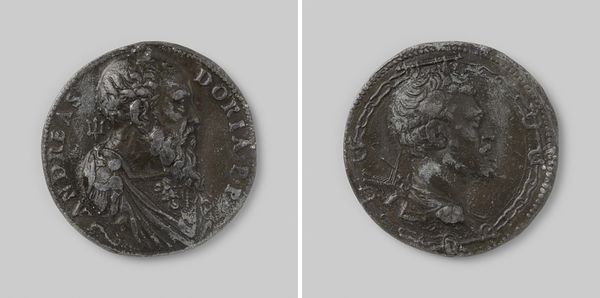
metal, relief, sculpture
#
portrait
#
baroque
#
metal
#
sculpture
#
relief
#
sculpture
#
history-painting
Dimensions: diameter 5 cm, weight 37.47 gr
Copyright: Rijks Museum: Open Domain
Curator: This is a medal from 1689, created to commemorate "The Expulsion of James II and Coronation of William III and Mary II Stuart." Jan (I) Smeltzing is credited as the artist. Editor: It's quite a striking object; somber in tone, and it really makes me wonder about the story behind the figures portrayed. You know, the textures feel coarse yet elegant simultaneously. Curator: Absolutely. The Baroque period valued intricacy, which can be felt in the rendering of textures—especially their hair— despite the use of such a medium as metal in relief. I'm keen to explore how an object like this, created through specific material processes, speaks volumes about the political narrative. The act of casting, of producing multiples, already signals the need to disseminate a specific political message. Editor: Precisely. And that message is rooted in power and the changing tides of leadership. Given the historical context—the Glorious Revolution—the depiction of William and Mary signifies not just a transfer of power but also a significant shift in the political landscape of England. It’s not just about royalty, but religious conflict, societal change, and ultimately, the power struggles that impact everyday life. I am interested in examining the implications of removing James II. Curator: Yes, thinking about the removal process allows me to consider labor and cost involved in minting something like this. We see an increased need for skilled labor, standardization, and investment in material procurement with events such as the coronation of new monarchs or shifts in dynastic power, Editor: Right, which is indicative of this period of transition and revolution, and considering that we know Jan Smeltzing produced this medal, we must remember it is through the lens of his experience. This narrative isn't neutral—it reflects a very specific perspective on monumental historical moments. Curator: And it makes me question if Smeltzing also minted materials for James II and how easy, or difficult it might have been to acquire metal. I'd want to examine whether that kind of Baroque era workshop facilitated dialogue and dissension around their ruler, and perhaps around gender roles given the queen consort Mary's dual portraiture with William. Editor: Definitely points worth exploring. And that final notion makes me realize we've just scratched the surface when it comes to fully understanding all the socio-political intricacies represented within these humble, cast reliefs. Curator: I agree. There are several processes at work beyond its symbolism. Looking more closely into how such objects are created reveals a good deal about the culture of their time.
Comments
No comments
Be the first to comment and join the conversation on the ultimate creative platform.
